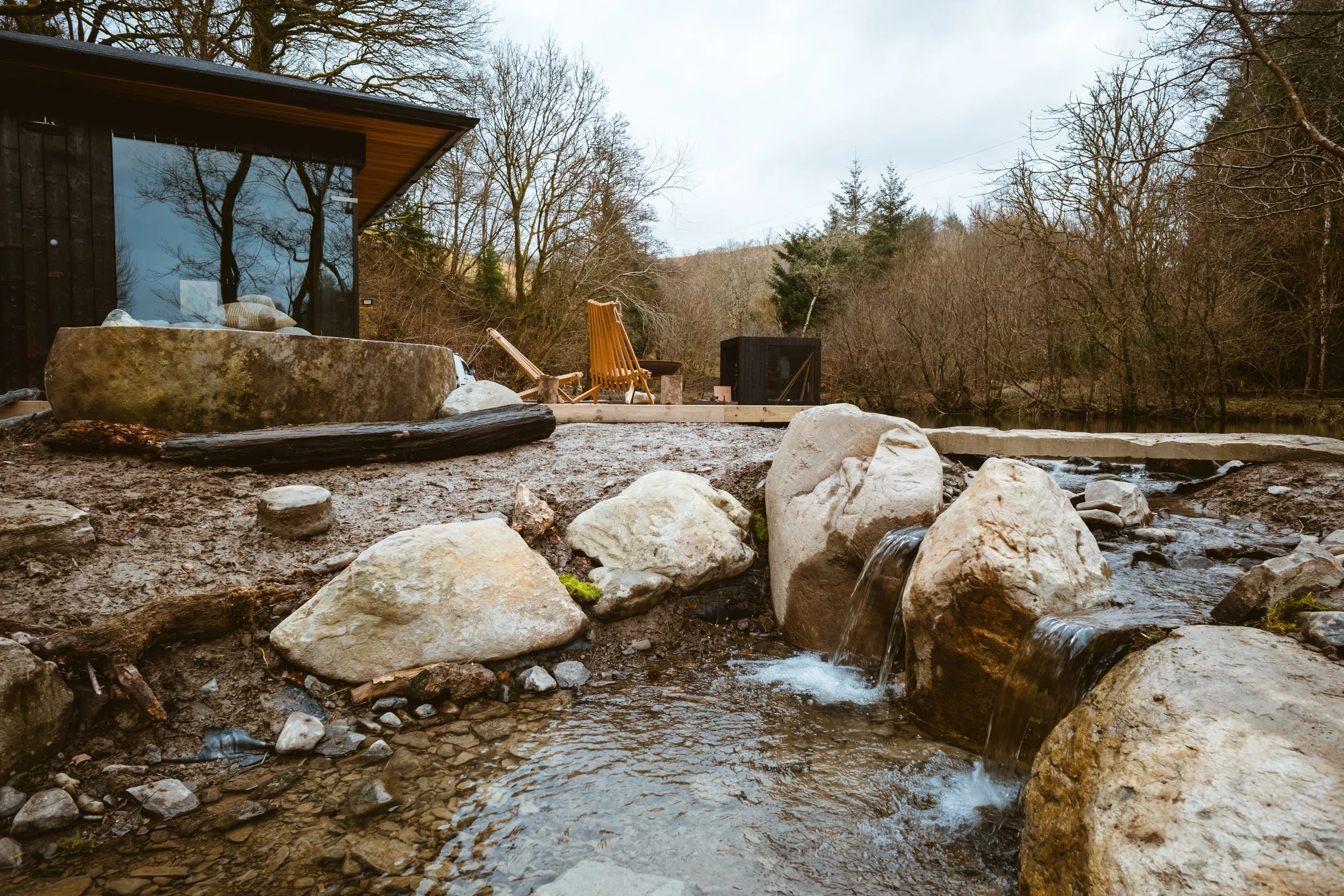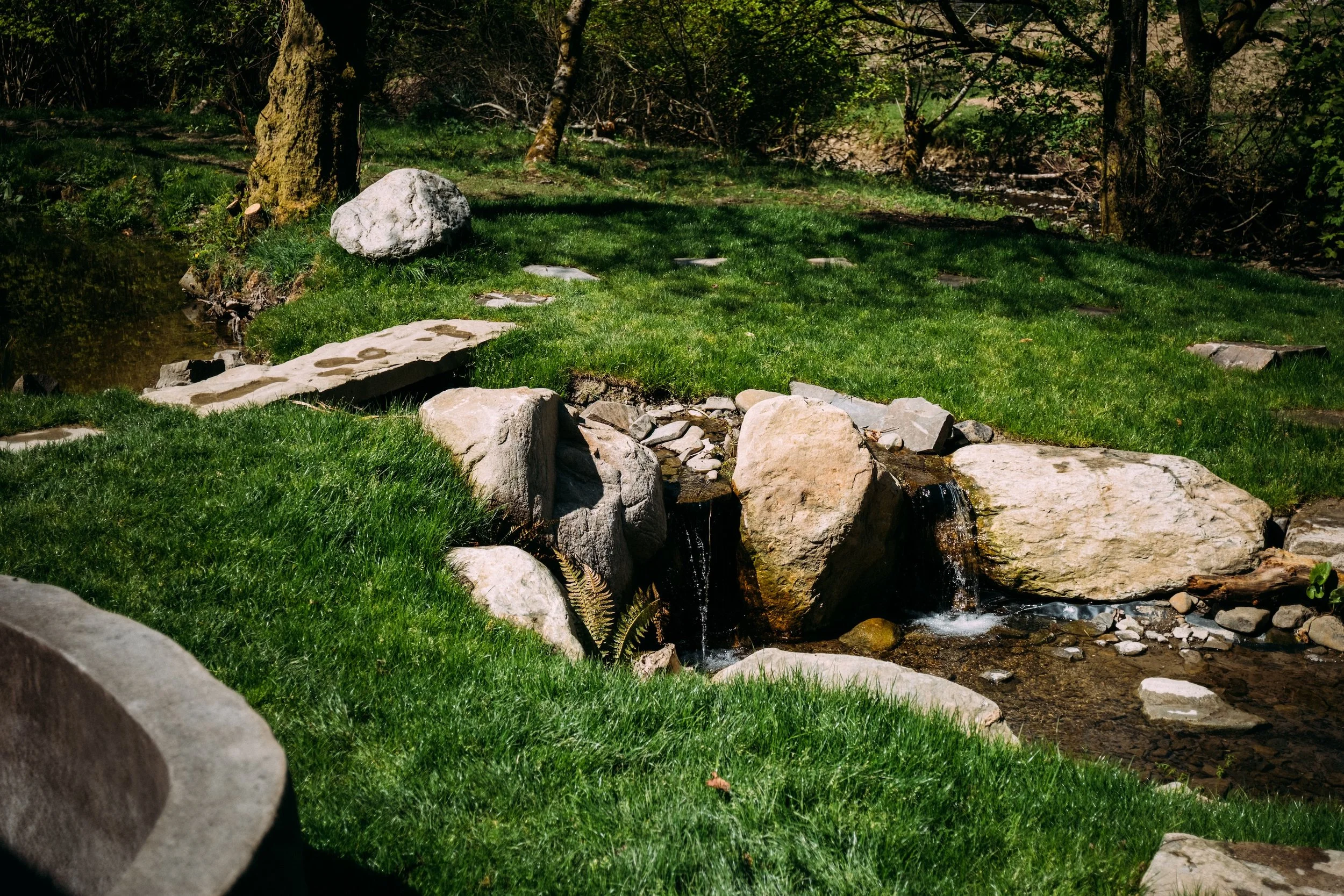Making waterfalls
The Nant founder Sam Meehan explains the process of harnessing the elements to create Ebba's waterfall – a calming cascade you can watch from the comfort of your bed with your morning coffee
When we began working on Ebba’s setting, the lake already existed. A farmer had dug it in the 1970s, fed by a pipe from the Glasnant stream. The clay soil meant no liner was ever needed, but over time the basin had silted up with leaf mulch. Before anything else, we had to empty and dredge it back to life.
Originally, the lake discharged at the far end through a small concrete weir. A weir, in its simplest form, is just a low barrier built across a channel to control how water flows over it. This one sent the outflow into an underground pipe and back into the stream. Decades on, the concrete was crumbling and in need of total replacement. Rather than rebuild it like-for-like, we saw the chance to do something better: bring the water overground and turn it into a waterfall.
Shaping the fall
Designing a waterfall is a bit like designing a staircase. First you work out the “rise” — the total vertical drop from the inlet height to the outlet point. Then you decide on the “run” — the horizontal distance the water will travel. By playing with these two, you can create a series of steps that shape the fall’s rhythm.
The real challenge at Ebba is water volume. The Glasnant runs fast in winter but slows right down in summer, so we needed a design that still looks alive in dry spells. The solution was to frame and focus the water rather than spread it thin. At each drop, we placed two heavy “framing stones” to narrow the flow and accelerate it, with a “bridge stone” spanning the gap to create the lip of the fall. Instead of a broad sheet of water, you get a lively channel that crashes with energy even when the volume is low.
Natural composition
Placement is everything. The angles of the stones decide where the water is pushed — and where it’s best viewed from. At Ebba, we tightened the angle so the waterfall can be seen directly from the bed inside the cabin, a deliberate piece of theatre.
Finally, we built in what we call “pondles”: shallow basins between drops that hold a little water even when the stream slows. These catch the light and keep the whole cascade looking wet and alive, ensuring the waterfall never feels dormant.
The result is less about brute force, more about composition — using stone, water, and gravity like architectural materials.
Find out more about our lakeside retreat, Ebba, complete with waterfall, sauna and outdoor stone bath at the-nant.co.uk/ebba


